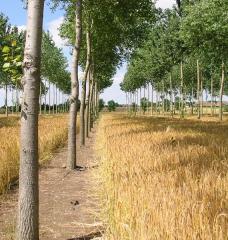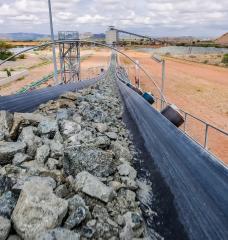
To limit the frequency and severity of droughts, wildfires, flooding, and other adverse consequences of climate change, nearly 200 countries committed to the Paris Agreement’s long-term goal of keeping global warming well below 2 degrees Celsius. According to the latest United Nations Intergovernmental Panel on Climate Change (IPCC) Report, achieving that goal will require both large-scale greenhouse gas (GHG) emissions reduction and removal of GHGs from the atmosphere.
At present, the most efficient and scalable GHG-removal strategy is the massive planting of trees through reforestation or afforestation — a “natural climate solution” (NCS) that extracts atmospheric carbon dioxide through photosynthesis and soil carbon sequestration.
Despite the potential of forestry-based NCS projects to address climate change, biodiversity loss, unemployment, and other societal needs — and their appeal to policymakers, funders, and citizens — they have yet to achieve critical mass, and often underperform due to a mix of interacting ecological, social, and financial constraints. To better understand these challenges and identify opportunities to overcome them, a team of researchers at Imperial College London and the MIT Joint Program on the Science and Policy of Global Change recently studied how environmental scientists, local stakeholders, and project funders perceive the risks and benefits of NCS projects, and how these perceptions impact project goals and performance. To that end, they surveyed and consulted with dozens of recognized experts and organizations spanning the fields of ecology, finance, climate policy, and social science.
The team’s analysis, which appears in the journal Frontiers in Climate, found two main factors that have hindered the success of forestry-based NCS projects.
First, the ambition — levels of carbon removal, ecosystem restoration, job creation, and other environmental and social targets — of selected NCS projects is limited by funders’ perceptions of their overall risk. Among other things, funders aim to minimize operational risk (e.g., Will newly planted trees survive and grow?), political risk (e.g., Just how secure is their access to the land where trees will be planted?); and reputational risk (e.g., Will the project be perceived as an exercise in “greenwashing,” or fall way short of its promised environmental and social benefits?). Funders seeking a financial return on their initial investment are also concerned about the dependability of complex monitoring, reporting, and verification methods used to quantify atmospheric carbon removal, biodiversity gains, and other metrics of project performance.
Second, the environmental and social benefits of NCS projects are unlikely to be realized unless the local communities impacted by these projects are granted ownership over their implementation and outcomes. But while engaging with local communities is critical to project performance, it can be challenging both legally and financially to set up incentives (e.g., payment and other forms of compensation) to mobilize such engagement.
“Many carbon offset projects raise legitimate concerns about their effectiveness,” says study lead author Bonnie Waring, a senior lecturer at the Grantham Institute on Climate Change and the Environment, Imperial College London. “However, if nature climate solution projects are done properly, they can help with sustainable development and empower local communities.”
Drawing on surveys and consultations with NCS experts, stakeholders, and funders, the research team highlighted several recommendations on how to overcome key challenges faced by forestry-based NCS projects and boost their environmental and social performance.
These recommendations include encouraging funders to evaluate projects based on robust internal governance, support from regional and national governments, secure land tenure, material benefits for local communities, and full participation of community members from across a spectrum of socioeconomic groups; improving the credibility and verifiability of project emissions reductions and related co-benefits; and maintaining an open dialogue and shared costs and benefits among those who fund, implement, and benefit from these projects.
“Addressing climate change requires approaches that include emissions mitigation from economic activities paired with greenhouse gas reductions by natural ecosystems,” says Sergey Paltsev, a co-author of the study and deputy director of the MIT Joint Program. “Guided by these recommendations, we advocate for a proper scaling-up of NCS activities from project levels to help assure integrity of emissions reductions across entire countries.”






